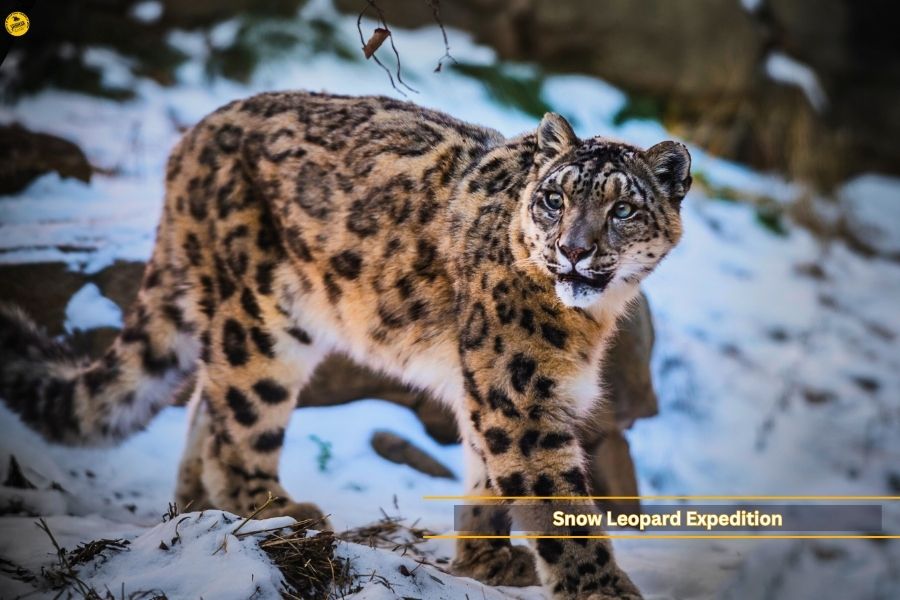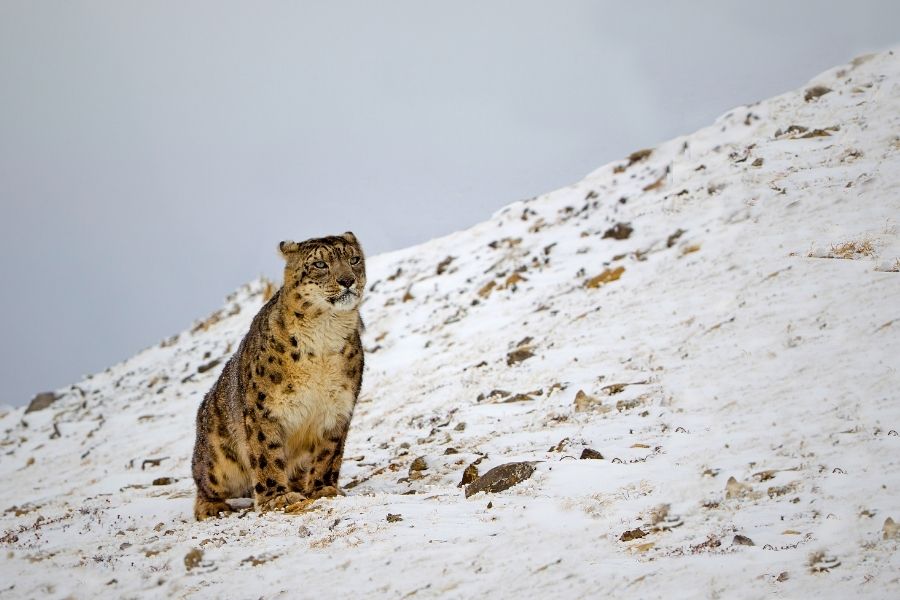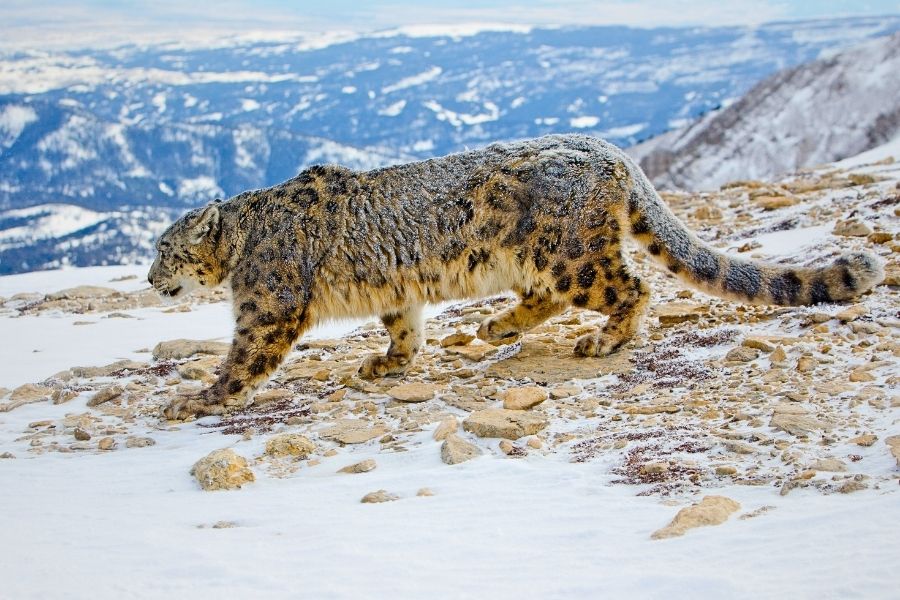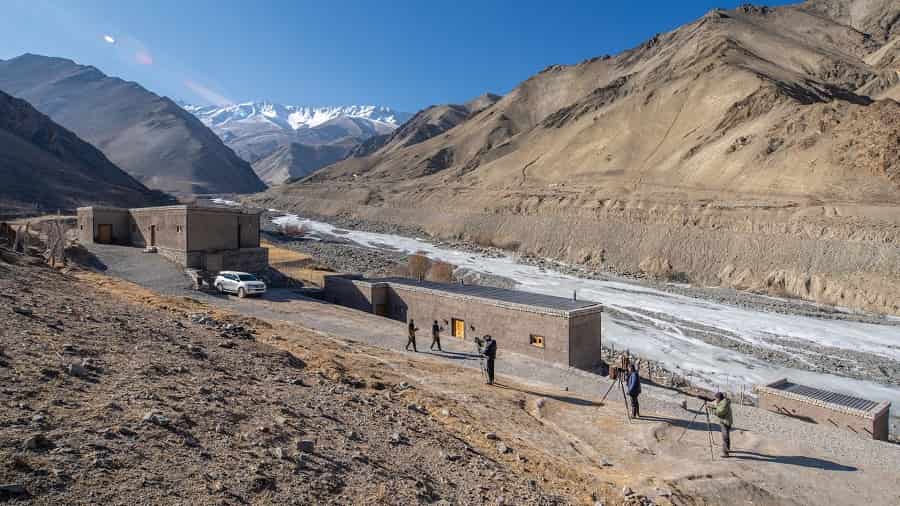The Snow Leopard Expedition Guide
The Snow Leopard Expedition in Ladakh is an unparalleled adventure for wildlife enthusiasts and trekkers. Nestled within the Hemis National Park, this expedition offers a rare opportunity to observe the elusive snow leopard in its natural habitat. This comprehensive guide aims to provide you with essential information about the expedition, including the nature of snow leopards, their interactions with local communities, spotting techniques, the landscape of Rumbak Valley, and tips for a successful trek.

Snow Leopard Expedition
Understanding the Snow Leopard
Fascinating Facts
Snow leopards are enigmatic creatures, known for their elusive nature and majestic appearance. Here are some intriguing facts:
- Silent Roar: Unlike other big cats, snow leopards cannot roar. Instead, they produce a muted cry, often referred to as a “silent roar.”
- Unique Tail: They possess the longest tail among the cat family, which aids in balance and maneuverability.
- Adaptive Behavior: Snow leopards do not use dens like tigers or lions. Instead, they adapt their territory based on food availability and mating needs.
- Daily Travel: These leopards are known to cover over 25 kilometers a day, often following the skyline for hunting and navigation.
- Camouflage and Agility: Their grey fur blends seamlessly with the rocky terrain of Ladakh, providing effective camouflage. They are also adept climbers, able to descend nearly vertical slopes with ease.
- Mating Calls: During mating season, female snow leopards call out from high vantage points, their calls traveling several kilometers.
- Diet and Digestion: Snow leopards primarily prey on bharal (blue sheep) and ibex. They can carry prey up to three times their body weight and often chew on a local plant, UMBU, to aid digestion.

Snow Leopard Expedition
Age Differences
The behavior and appearance of snow leopards can vary significantly between young and old individuals:
- Young Leopards: Characterized by their shiny, dense fur and more aggressive behavior. They are typically found at higher altitudes and are known to be more territorial.
- Older Leopards: As snow leopards age, their fur becomes duller, and they often struggle with hunting nimble prey. Older leopards may descend to lower altitudes to find food, increasing the likelihood of encountering them near human settlements.
Historical and Modern Interactions with Villagers
Historical Context
Historically, snow leopards and local villagers in Ladakh had a contentious relationship. In the past, the hunting of snow leopards was prevalent, driven by the need to protect livestock and the allure of sport hunting. Villagers from areas such as Rumbak, Markha, and Ulley used to track and kill these leopards using rocks, traps, and later, firearms. The disruption caused by snow leopards preying on livestock led to these drastic measures.

Snow Leopard Expedition
Modern Conservation Efforts
In recent years, the relationship between snow leopards and villagers has evolved significantly due to conservation initiatives:
- Awareness and Protection: Spearheaded by figures like the Dalai Lama, awareness campaigns have helped shift attitudes towards snow leopards. Hunting has been outlawed, and conservation organizations have implemented protective measures.
- Ecosystem Management: Efforts have been made to create separate spaces for villagers and snow leopards, reducing conflicts. Designated routes and areas for livestock and farming have been established.
- Compensation and Insurance: The introduction of compensation policies has mitigated the impact of leopard attacks on livestock. Villagers are financially compensated for losses and can insure their assets.
- Alternative Livelihoods: The promotion of homestay programs has provided villagers with alternative sources of income, reducing their reliance on livestock farming.
Spotting the Snow Leopard
Techniques and Tips
Spotting a snow leopard requires patience, keen observation, and knowledge of their behavior. Here are some techniques:
- Footprints and Pugmarks: Tracking begins with locating snow leopard footprints. The size, depth, and angle of these marks can provide clues about the leopard’s age and direction.
- Scrapes and Excreta: Snow leopards mark their territory by scraping the ground and leaving scat. Examining these signs can reveal recent activity and dietary habits.
- Pee Marks: Snow leopards use urine to mark their territory on prominent rocks. These markings can help identify their presence.
- Skyline Ridges: Leopards often traverse high ridges. Scanning these areas with binoculars or a telescope can increase your chances of spotting them.
- Best Times for Spotting: Early morning and late afternoon are optimal for observing snow leopards, as they are more active during these times.
The Landscape of Rumbak Valley
Terrain and Scenery
Rumbak Valley offers a dramatic and otherworldly landscape that enhances the expedition experience:
- Topography: The valley features a stark, desert-like environment with rugged hills, steep slopes, and a partially frozen Indus River.
- Vegetation: Despite the harsh conditions, vibrant crops and hardy vegetation provide sustenance for local wildlife, including mountain goats.
- Trails: The trek through Rumbak Valley, Husing Valley, and Tarbung Valley involves challenging ascents and a variety of terrains, from rocky paths to snowy slopes.
Navigating the Winds of Rumbak
Deceptive Sounds
The winds in Rumbak Valley can create confusing auditory illusions:
- Wind Sounds: The winds may mimic animal calls or other noises, especially near viewpoints. It’s essential to stay alert and consult with your guide if unsure about any sounds.
- Guide Consultation: Always check with your guide to confirm whether the sounds you hear are related to wildlife activity.
Mannerisms to Follow
Key Behaviors
Adhering to specific behaviors can enhance your experience and increase your chances of spotting snow leopards:
- Remain Still: Sudden movements can alert snow leopards from a distance. Staying still and moving slowly can improve your chances of a successful sighting.
- Exercise Patience: Avoid frequently changing your position or field of vision. Focusing on a particular spot for an extended period can yield better results.
- Minimize Noise: Keep electronic devices and conversations to a minimum to maintain the natural stillness of the environment.
- Stay Hydrated: The dry, cold air can dehydrate you quickly. Ensure you drink plenty of water to avoid headaches and fatigue.
Equipment for the Expedition
Essential Gear
Proper equipment is crucial for a successful expedition:
- Binoculars and Telescopes: A high-quality binocular or telescope will aid in spotting distant wildlife. Consider renting or purchasing equipment suited for wildlife observation.
- Usage Tip: Follow the 20-20 rule to avoid eye strain. Take a 20-second break every 20 minutes of continuous use.
Other Wildlife in Hemis National Park
Diverse Fauna
Hemis National Park is home to a variety of wildlife, including:
- Tibetan Wolf: A predator of the high Himalayas.
- Golden Eagle: Known for its impressive hunting skills.
- Pika: A small, mountain-dwelling mammal.
- Brown Fox: Another resident of the rugged terrain.
The Role of Communication
Importance on the Expedition
Effective communication is vital for coordinating the expedition:
- Walkie-Talkies: Guides use advanced communication tools to stay connected and share information about wildlife sightings and trail conditions.
Life of a Snow Leopard Expedition Guide
Guide’s Experience
Guides like Rigzin Tamchos provide invaluable expertise:
- Local Knowledge: Guides bring deep familiarity with the terrain and wildlife, often passed down through generations.
- Training: Guides undergo rigorous training to master tracking techniques and understand animal behavior.
- Tracking and Spotting: Guides spend hours scouting for footprints, scrapes, and other signs of snow leopard activity, adjusting their approach based on the evidence they find.
Conclusion
The Snow Leopard Expedition in Ladakh offers a unique and challenging opportunity to observe one of the world’s most elusive big cats. By understanding the snow leopard’s behavior, historical interactions with local communities, and effective spotting techniques, you can maximize your chances of a memorable encounter. The rugged beauty of Rumbak Valley, combined with the expertise of local guides and careful preparation, ensures an adventure like no other.
Whether you’re an experienced wildlife enthusiast or a curious traveler, this expedition promises an unforgettable experience in one of the world’s most stunning and remote landscapes.
